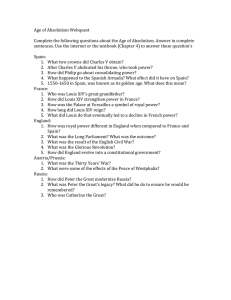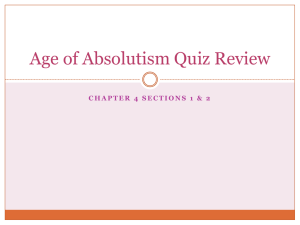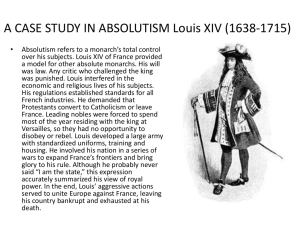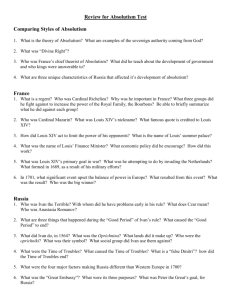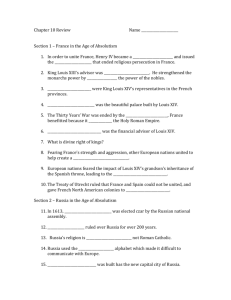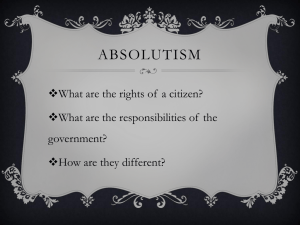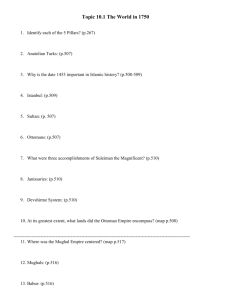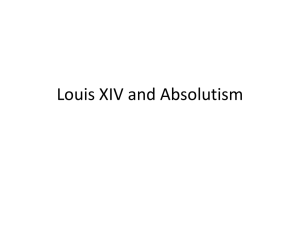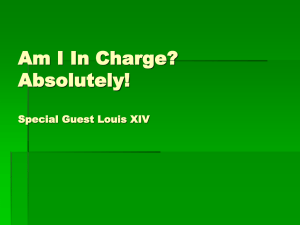Absolutism WH14a - Wayne County Public Schools
advertisement
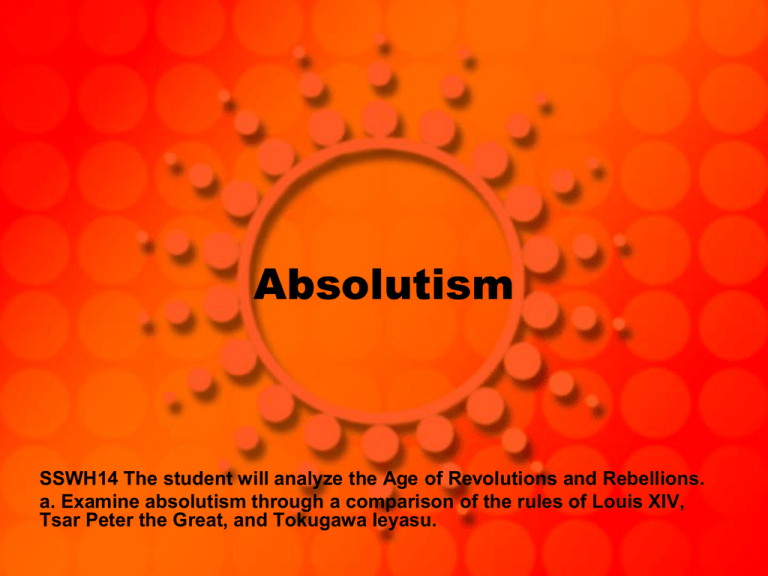
Absolutism SSWH14 The student will analyze the Age of Revolutions and Rebellions. a. Examine absolutism through a comparison of the rules of Louis XIV, Tsar Peter the Great, and Tokugawa Ieyasu. Absolutism • A political system in which a ruler holds total power (p. 441) • Tied to the divine right of kings • Kings responsible to no one but God • Absolute monarchs had tremendous powers such as to make laws, levy taxes, administer justice, control the state’s officials, and determine foreign policy Louis XIV – The Sun King Reigned 1643 – 1715 • Long regarded as the best example of the practice of absolutism in the 17th century • Came to the throne in 1643 at the age of 4 • Took over supreme power at the age of 23 with the death of chief minister Cardinal Mazarin Louis XIV Government & Religion under Louis XIV • One of the keys to his power was his control of the central policy making of the government • Royal court established at Versailles had three purposes – Personal household of the king – Chief offices of the state were located there – Powerful subjects came to find favors & offices for themselves Govt. & Religion Under Louis XIV Continued…. • Government ministers EXPECTED to obey his every wish. • Complete authority over foreign policy, the Church, and taxes • In the provinces, the king had less power so he bribed important people to guarantee his policies were carried out • Goal to make France the preeminent power in Europe & achieve military glory How did Louis XIV achieve his goal? Tsar Peter the Great of Russia • One of most prominent members of the Romanov dynasty • Became czar (or tsar) in 1689 • Absolutist monarch who claimed divine right to rule • Visited the west and came back determined to westernize or Europeanize Russia • Under Peter, Russia became a great military power • By his death, Russia was an important European state Military & Government Changes • Reorganize the army • Form the first Russian navy • Divided Russia into provinces • Hoped to create a police state • Hoped for civic duty from officials, but his fears prevented it Cultural Changes • Began to introduce Western customs, practices, & manners into Russia • Beards were shaved and coats shortened to imitate the west • Insisted Russian upper class women remove the veils that had traditionally covered their face and move out into society St. Petersburg • Object of reforms = Make Russia into a great state and military power • To do this he needed a port with access to Europe • A long and hard fought war with Sweden achieved this goal • St. Petersburg- a port city on the Baltic Sea became the capital and would remain such until 1918 St. Petersburg
